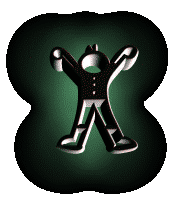![]() Lesson
Lesson![]()
![]()
A• Economic Problems
Human beings have many wants . Yet, the resources in the world are limited . Therefore, economic problems exist.
B• SCARCITY AND CHOICE
Because of unlimited wants of human beings and therefore relatively scarce resources in this world, men must make choices .
Scarcity of resources relative to unlimited human wants is the basic cause of all economic problems .
The fundamental economic problems arising from scarcity of resources are:
1. What to produce?
2. How to produce?
3. For whom to produce?
Additional problems are
4. What quantities to produce?
5. When to produce?
6. Where to produce?
C• OPPORTUNITY COST AND ECONOMIZING
In satisfying your wants from limited resources, you make choices.
Opportunity cost is the real cost of satisfying a want. In satisfying a want, limited resources means that another want has to be foregone.The opportunity cost arising from satisfying a want is measured in terms of the best alternative want given up.
To make the best use of scarce resources in satisfying wants, human beings aim at Economizing .
D. DECISION MAKERS
1. Households
Consumption decisions come from a household.
2. Firms
Production decisions come from a firm.
3. Government
A government provides a framework of law and order to facilitate the implementation of consumption and production decisions .
A government is also responsible for the provision of essential public services.
E. MARKETS
1. Goods Markets
in which goods and services are transacted.
2. Factor Markets
in which land, labour, capital and entrepreneurship are employed or hired.
A market needs not have a physical location. It can be linked by electronic and computing equipment.
F. ECONOMIC SYSTEM
1. Market Economy
In a market economy, the Market solves the fundamental economic problems of ¡§what¡¨, ¡§how¡¨ and ¡§for whom¡¨ goods and services are produced.
Markets satisfy competing wants through price mechanism.Markets produce goods and services to satisfy first the wants of households who pay the highest prices.
2. Command Economy
The Government decides on the answers to ¡§what¡¨, ¡§how¡¨ and ¡§for whom¡¨ goods and services are produced. This is a command economy.
3. Mixed Economy
A mixed economy answers ¡§what¡¨, ¡§how¡¨ and ¡§for whom¡¨ questions with both price mechanism and government decisions .
G. Economy in China
The economy of China was a planned economy in the 1950's to 1960's.
In 1970's, China opened herself to the world again. China is changing to a mixed economy or called socialist market economy.
Some of the major criticisms of markets are:
1. The adjustments (i.e. allocation of resources) regulated by the markets are reactive and respond to changes already taken place in the markets.
2. Price signals indicate the demand and supply of a past or an existing market condition. It is not predictive for planning purpose.
3. Market cannot fulfill the needs and interests of all different section in a society. Therefore, interest conflicts are created during the course of adjustments.
H. POSITIVE AND NORMATIVE STATEMENTS
1. Many economic events and phenomena are illustrated in positive statements. Positive statements are about what is in the economic description.
A positive statement is determined as true or false after careful observation and measurement. For example, the unemployment rate in Hong Kong in 2001 was 7% is a positive statement.
2. Economic opinions are expressed in normative statements.
You may agree or disagree with these statements. For example, command economy is worse than market economy.
I• PRODUCTION POSSIBILITY FRONTIER
Production is the employment of land, labour, capital and entrepreneurship resources to provide goods and services.
In the production process, Capital goods, for example machines, are used to provide further output.
Consumption goods refer to the final products satisfying human wants.
Production Possibility Frontier (PPF) is a curve linking the combinations of goods and services that can be produced in an economy when all its resources are fully and efficiently employed.
Moving from one combination on the frontier to another reflects opportunity cost.
The frontier is the boundary between the attainable and the unattainable combinations of production in the current context of resources and technology.
J. Economic Growth
Economic growth describes the addition of production capabilities to an economy.
Capital accumulation and technological progress are the basic sources of economic growth.
Capital accumulation means the addition of capital resources to the economy.
Technological progress means the development of the more efficient and effective production of goods and services in new methods.
The benefits of Economic growth, with more output produced, are usually shared in international trade .
